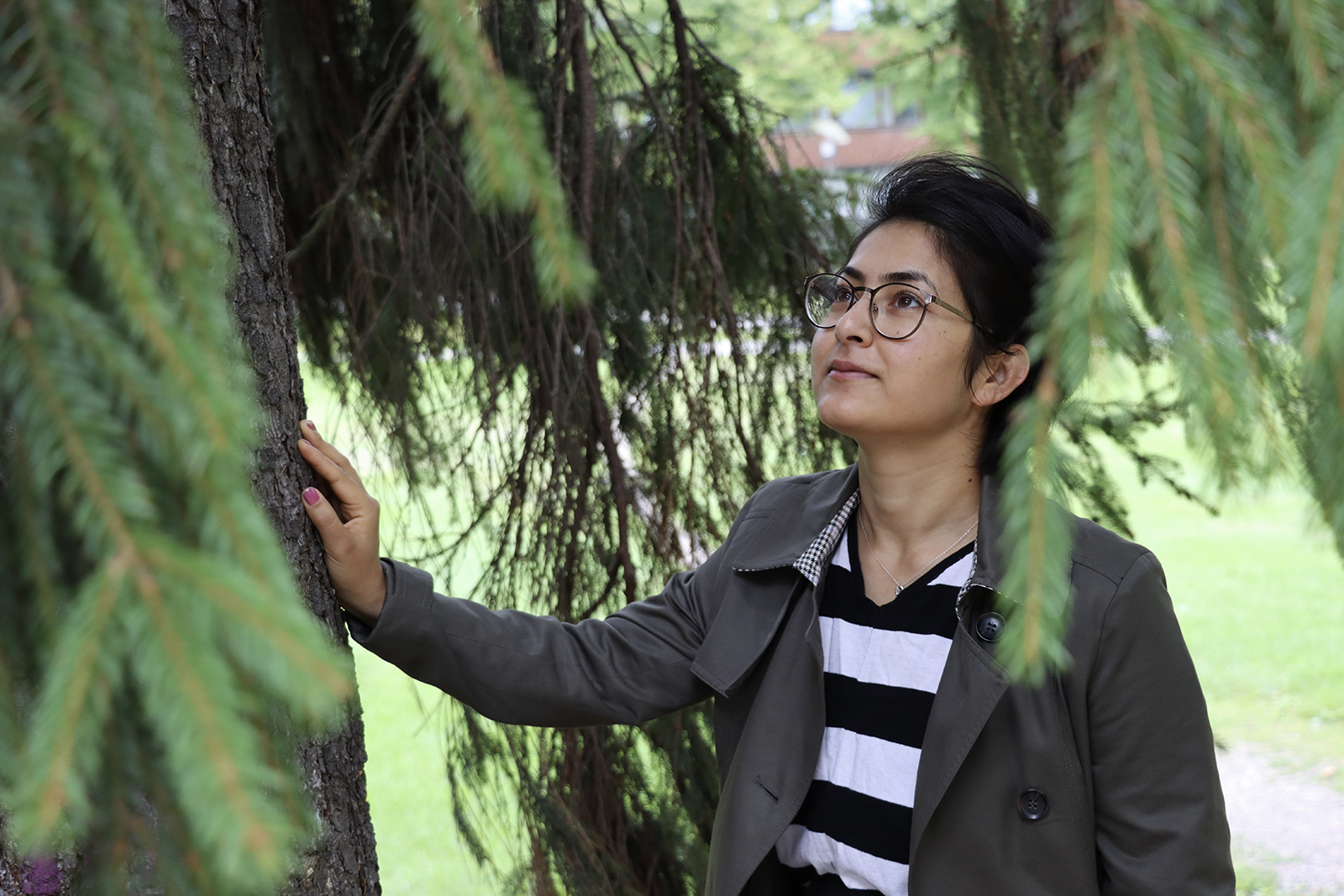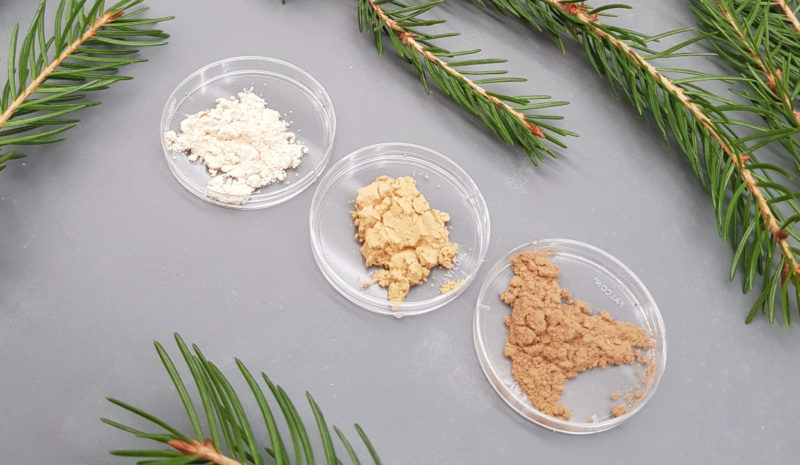
About one fourth of wood is made of hemicelluloses, which is expected to make a breakthrough in the food, packaging and pharmaceutical industries as stabilizers. Also called ’spruce gum’, wood hemicelluloses is derived from sidestreams of pulp manufacturing.
To obtain a homogeneous emulsion when mixing oil and water, a stabilizer is needed. Some of them are familiar to us from the product descriptions of foodstuffs and cosmetics: gum arabic, guar gum, pectinsand locust bean (or carob) gum, for example.
These conventional additives could, however, be replaced by wood hemicelluloses, which has been intensively studied in Finland in recent years.
’Wood hemicelluloses has a huge potential,’ says researcher Mamata Bhattarai from the Aalto University.
’Wood hemicelluloses can be used to replace both vegetable and animal-derived stabilizers in foodstuffs, cosmetics and pharmaceuticals. Its potential is also being explored for the manufacturing of bio-based packaging films and thermal storage materials .’

Spruce gum stabilizes yoghurt
Bhattarai is particularly interested in using wood hemicelluloses in emulsions in various foods, such as yoghurt or salad dressings. Here, stabilizers provide the desired consistence and mouthfeel.
In her doctoral thesis, Bhattarai studied spruce hemicelluloses, in other words, galactoglucomannans, and the properties of spruce gums extracted by different methods.
She found that the solubility of spruce gum and its stabilizing property in emulsions were greatly affected by how it had been extracted from wood. To take an example, pure spruce gum derived from modified pressurized hot-water extraction had the highest solubility in water, while spruce gum mixed with lignins worked better as stabilizer.
’I believe that these findings will provide a basis for many further studies. We still need plenty of information on the effect of different extraction methods on the properties of hemicellulose and thus its potential use as raw material.’
Awarded thesis promotes circular bioeconomy
Bhattarai defended the doctoral dissertation in the Faculty of Agriculture and Forestry of the University of Helsinki in November of 2020. Yesterday, her doctoral thesis Associative behavior of spruce galactoglucomannans in aqueous solutions and emulsions was awarded by the Finnish Natural Resources Research Foundation as the best doctoral thesis of the year. The purpose of the award is to encourage young researchers to undertake work that promotes the sustainable use of natural resources and has commercial potential.
The foundation states that Bhattarai ’s research on the extraction and use of galactoglucomannan reveals a considerable industrial potential in Finland’s forest-based circular bioeconomy.

Bhattarai says that she got interested in wood hemicelluloses soon after starting her research assistant position in the group of Associate Professor Kirsi Mikkonen at the University of Helsinki in 2015.
Mikkonen has studied hemicellulose for years and has long believed in the extensive potential of spruce gum.
One fourth of wood consists of hemicelluloses
It is believed that the task of hemicelluloses in wood is to make it more flexible. Without it, trees would not bend in the wind.
Roughly, wood consists of just one fourth of hemicellulose, one third of lignin and over one third of cellulose. The structure of hemicellulose is a long and complicated chain of monosaccharides (sugars).
But how is it that, unlike cellulose and lignin, hemicellulose has not been utilized so far? One reason, according to Bhattarai, is that cellulose is the focus of industries to prepare paper and paper boards, and because hemicellulose research on applications is still in its infancy.
Separating hemicellulose from lignin is particularly difficult. ’Another thing to study is whether the two could be used as raw material in combination,’ notes Bhattarai.
’Industry only began to utilize the potential of wood components other than cellulose as raw material a few years ago. By now the number of bioproduct mills are declining due to less demand of paper, and with new research results, they are sure to interest themselves in also using hemicellulose.’
Replacing synthetic raw materials in agriculture
Bhattarai is currently researching the properties of hemicelluloses for use agricultural applications as nanocarriers, in which hemicellulose could replace synthetic counterparts.
’Even here the extraction method used is very important. We are studying several extraction methods to find what works best on the leaves of plants,’ says Bhattarai.
For both her doctoral thesis and her current project, Bhattarai is pleased to have received high-quality spruce gum material from Dr. Petri Kilpeläinen, Senior Scientist at Natural Resources Institute Finland. Kilpeläinen himself focuses on the hot-water extraction of hemicellulose for raw material and research material.
Bhattarai says that she is most interested in topics related use of sustainable materials and technology in agri-food value chains. Utilizing the properties of natural materials to replace fossil materials is only just beginning, she feels.
Originally from Nepal, Bhattarai long viewed wood as just something to research and as sustainable raw material. During her time in Finland she has learned to appreciate forests.
’In Finland, I have discovered the forest trails, its calming effect and its many treasures, such as berries and mushrooms.’

4 comments on “Wood is increasingly used in foodstuffs and cosmetics – Wood hemicelluloses has a huge potential, says researcher Mamata Bhattarai”
/ Philippe herman
What about the digestion of hemicellulose? Humans cannot digest cellulose or hemicellulose. Or is the function as dietary fiber sufficient?
/ Michael BRETT
Fascinating – I will pass this on to several people.
/ Michael BRETT
Fascinating article, will research further and circulate the article to friends.
/ Nadine Dominicus van den Bussche
Fascinating